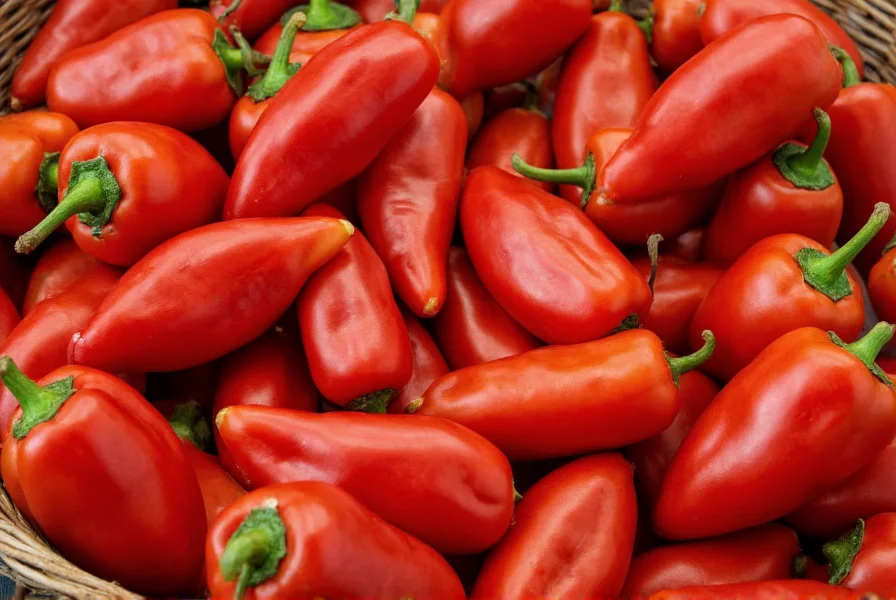Peppers rank among the lowest-calorie vegetables available, making them an excellent choice for health-conscious eaters and those tracking their daily intake. Understanding the precise calorie content of different pepper varieties helps with meal planning, weight management, and optimizing nutritional intake without sacrificing flavor.
Calorie Comparison Across Popular Pepper Varieties
While all peppers share remarkably low calorie counts, subtle differences exist between varieties. The ripening process affects sugar content, which slightly increases calories as peppers change color from green to red, yellow, or orange.
| Pepper Type | Calories (per 100g) | Calories (per medium pepper) | Key Nutritional Highlights |
|---|---|---|---|
| Green Bell Pepper | 20 | 24 | High in vitamin C, vitamin K, and fiber |
| Red Bell Pepper | 31 | 37 | Rich in beta-carotene, lycopene, and vitamin A |
| Yellow Bell Pepper | 32 | 38 | Excellent source of vitamin C and antioxidants |
| Orange Bell Pepper | 30 | 36 | High in vitamin A and carotenoids |
| Jalapeño Pepper | 29 | 4 | Contains capsaicin, vitamin C, and B vitamins |
| Habanero Pepper | 30 | 3 | Extremely high in vitamin C and capsaicin |
| Cayenne Pepper | 318 | 6 | Concentrated source of capsaicin and vitamins |
Note that hot peppers like jalapeños and habaneros contain significantly fewer calories per serving because people typically consume much smaller quantities. A single jalapeño pepper (about 14g) contains only 4 calories, while a habanero (approximately 10g) provides just 3 calories.
Nutritional Profile Beyond Calories
Peppers deliver exceptional nutritional value far beyond their minimal calorie count. Bell peppers, for example, provide 169% of the daily recommended vitamin C in just one medium red pepper. They're also excellent sources of:
- Vitamin A (especially in red and orange varieties)
- Vitamin B6
- Vitamin K1
- Potassium
- Dietary fiber (1.5-2.5g per medium pepper)
- Antioxidants like capsanthin, quercetin, and lutein
The vitamin C content in peppers actually increases as they ripen from green to red. Red bell peppers contain nearly 9 times more beta-carotene and 1.5 times more vitamin C than their green counterparts. This explains the slight calorie increase in riper peppers—they've developed more natural sugars along with enhanced nutritional compounds.

Health Benefits of Low-Calorie Peppers
The combination of minimal calories and high nutrient density makes peppers valuable for multiple health goals. Research shows that regular pepper consumption correlates with several health benefits:
Capsaicin, the compound that gives hot peppers their heat, has been studied for its potential metabolic effects. Some research suggests capsaicin may temporarily increase calorie burning and reduce appetite. A study published in the Appetite journal found that adding red pepper to meals reduced appetite and increased energy expenditure in people not accustomed to spicy foods.
For weight management, peppers offer volume and flavor with minimal caloric cost. Adding sliced bell peppers to salads, stir-fries, or omelets increases meal satisfaction without significantly impacting daily calorie totals. The fiber content (about 2.5g per medium bell pepper) also contributes to feelings of fullness.
Practical Applications for Calorie Tracking
When incorporating peppers into calorie-conscious meal planning, consider these practical tips:
- Use bell peppers as low-calorie vessels for fillings instead of higher-calorie bases
- Add sliced peppers to sandwiches and wraps for crunch without extra calories
- Roast peppers to enhance natural sweetness without adding sugar
- Include hot peppers in recipes to boost flavor without increasing calorie count
- Be mindful of preparation methods—grilled or roasted peppers maintain low calorie counts, while stuffed or fried preparations add significant calories
For those following specific dietary patterns, peppers fit well into Mediterranean, DASH, and most plant-based eating plans. Their versatility makes them suitable for raw consumption, cooking, and even pickling while maintaining relatively low calorie counts.

Pepper Calories in Context
Understanding pepper calories becomes most valuable when comparing them to other common vegetables and snack options. A medium bell pepper contains fewer calories than:
- One small apple (77 calories)
- One medium banana (105 calories)
- One cup of cooked broccoli (55 calories)
- One cup of cooked carrots (83 calories)
However, peppers provide comparable or higher amounts of certain nutrients, particularly vitamin C. This nutrient density—maximum nutrition per calorie—is what makes peppers exceptional dietary components for those monitoring their calorie intake without compromising nutritional quality.
Frequently Asked Questions
How many calories are in a whole bell pepper?
A medium whole bell pepper (about 119g) contains approximately 24-37 calories depending on color. Green bell peppers have the fewest calories (about 24), while red, yellow, and orange varieties contain slightly more (30-37 calories) due to higher sugar content as they ripen.
Are peppers good for weight loss?
Yes, peppers are excellent for weight loss due to their extremely low calorie density and high nutrient content. They provide volume, fiber, and flavor with minimal calories, helping you feel satisfied while maintaining a calorie deficit. Hot peppers containing capsaicin may also temporarily boost metabolism.
Do different colored peppers have different calorie counts?
Yes, different colored peppers have slightly different calorie counts. Green bell peppers contain about 20 calories per 100g, while red, yellow, and orange varieties contain 30-32 calories per 100g. This difference occurs because peppers develop more natural sugars as they ripen from green to other colors, slightly increasing their calorie content.
How many calories are in a jalapeño pepper?
A single jalapeño pepper (approximately 14g) contains about 4 calories. Despite having similar calories per 100g as bell peppers (29 calories), jalapeños are consumed in much smaller quantities due to their heat, making them extremely low-calorie flavor enhancers.
Does cooking peppers change their calorie content?
Basic cooking methods like grilling, roasting, or stir-frying without added fats won't significantly change the calorie content of peppers. However, preparation methods that add oils, cheese, or other ingredients will increase the total calories. Stuffed peppers or fried pepper dishes can contain substantially more calories than raw peppers.











 浙公网安备
33010002000092号
浙公网安备
33010002000092号 浙B2-20120091-4
浙B2-20120091-4